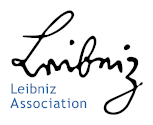- The Institute
- Research
- Dictatorships in the 20th Century
- Democracies and their Historical Self-Perceptions
- Transformations in Most Recent History
- International and Transnational Relations
- Edited Source Collections
- Dissertation Projects
- Completed Projects
- Dokumentation Obersalzberg
- Center for Holocaust Studies
- Berlin Center for Cold War Studies
- Publications
- Vierteljahrshefte
- The Archives
- Library
- Center for Holocaust Studies
- News
- Dates
- Press
- Recent Publications
- News from the Institute
- Topics
- Munich 1972
- Confronting Decline
- Feminist, Pacifist, Provocateur
- Der Mauerbau als Audiowalk
- Digital Contemporary History
- Transportation in Germany
- Envisaged Futures at the End of the Cold War
- From the Reichsbank to the Bundesbank
- German Federal Chancellery
- History of Sustainabilities: Discourses and Practices since the 1970s
- Changing Work
- Democratic Culture and the Nazi Past
- The History of the Treuhandanstalt
- Foreign Policy Documentation (AAPD)
- Dokumentation Obersalzberg
- Hitler, Mein Kampf. A Critical Edition
- "Man hört, man spricht"
- Dictatorships in the 20th Century
- Democracies and their Historical Self-Perceptions
- Transformations in Most Recent History
- International and Transnational Relations
- Edited Source Collections
- Dissertation Projects
- Completed Projects
- Dokumentation Obersalzberg
- Center for Holocaust Studies
- Berlin Center for Cold War Studies
"To the East" - The short Life of German-speaking Jews after their Deportation to occupied Eastern Europe
Employees (IfZ):
Prof. Dr. Andrea Löw
Projektinhalt:
The deportation of German and Austrian Jews to occupied Poland, Belarus, and the Baltic is a well-researched topic: We already know much about their previous lives and their places of origin, and numerous biographies of individual deportees have been reconstructed; there are equally comprehensive studies of the final destinations where they met their nightmarish fates.
There has, however, yet to be a complete history of the short lives of German-speaking Jews “in the East”. What were the expectations and experiences of Jewish men, women, and children (and those defined as “Jewish”) who were deported from numerous cities in the Greater German Reich, first since 1939 to occupied Poland, and, starting in late 1941 and in 1942, also to Minsk and Riga to mention the two most important destinations. What did they think of their situation following the shock of their arrival in places so foreign to them? How did they perceive the local population and how were they viewed by them in return?
What was the attitude, moreover, of the local German officials towards those Jews who – not least due to their common language – were so much more familiar to them than were the local “Eastern Jews”, but whom they nevertheless murdered in the end? Language indeed played a central role here: While it represented a boundary between the deportees and the local population, it also offered a means of orientation as well, as for example with the streets of the Riga Ghetto being named after the places of origins of the deportation transports.
The situation differed depending on whether people were deported to the area around Nisko in autumn 1939, or to several locations within the district of Lublin in the “General Government” in spring 1940 and spring 1941, or whether the deportees were confronted with the aftermath of mass murders upon arrival, as was the case in Minsk and Riga beginning in late 1941, where segments of the local ghetto population were sometimes shot shortly before deportation trains arrived to make room for the new arrivals, who would then move into the now empty lodgings. What effects did this experience have on their self-perception and how did they make use of what little scope of action they still had? How did the experiences of violence and the chance to survive differ among men, women, and children? Depending on the point in time and the places they were deported to, internal Jewish conflicts with forcibly enlisted Jewish officials also played a major role, as they were sometimes blamed for the deportees’ predicaments.
Space and time are thus categories of particular importance to the study, which aims to take seriously the short lives of the deportees “in the East” – in a phase central to their experience of persecution – and to describe their expectations, realities, and reactions.
The project takes into account the social processes and dynamics of the Holocaust as part of a broader integrated history, an approach that has played an increasingly significant role in recent research: The deportees found themselves placed within an entirely new and foreign social environment, interacting with the local Jewish population, and at times with the non-Jewish population and with German officials. The study intends to display how the deportees acted and attempted to influence their condition within this complicated social situation.





